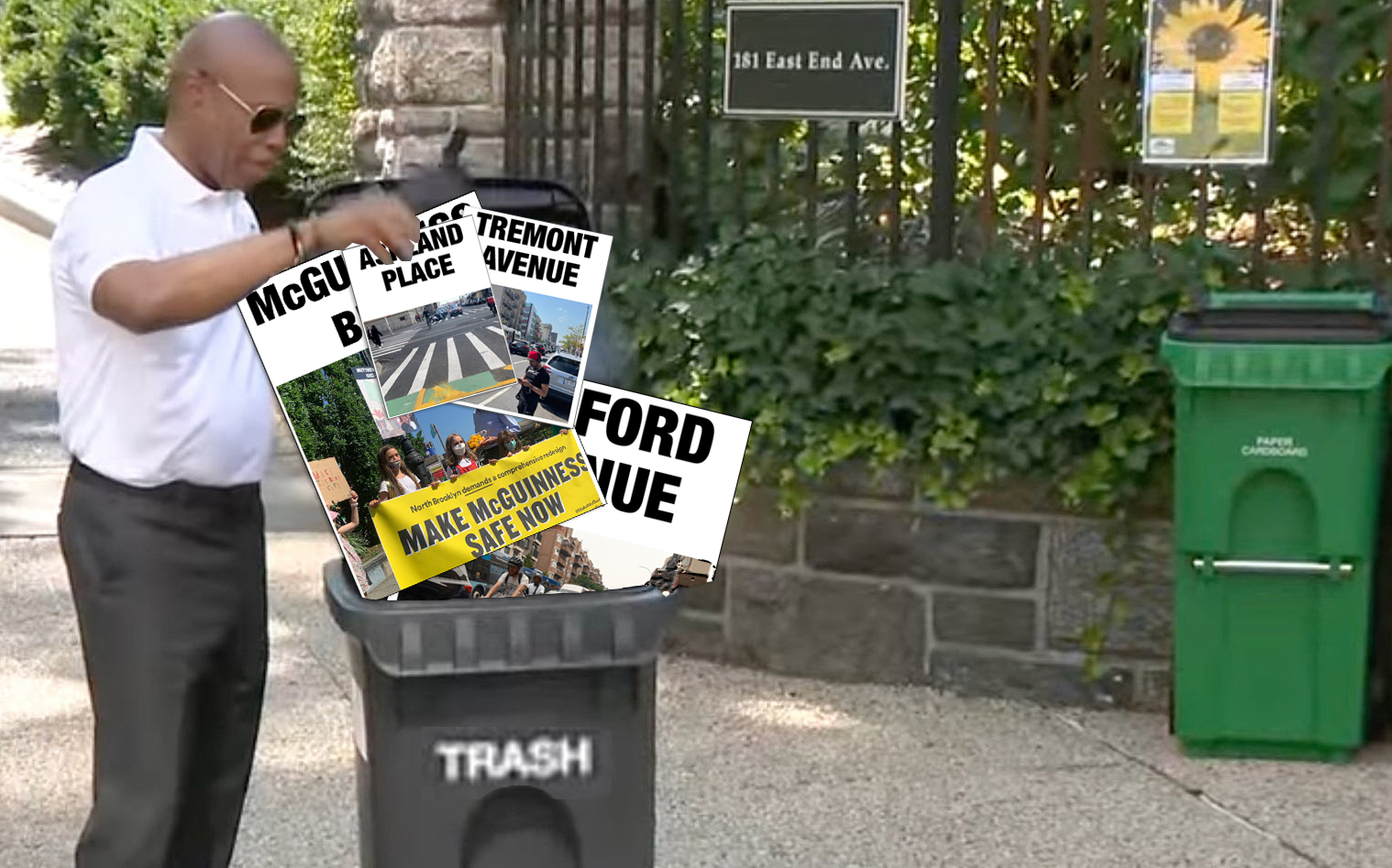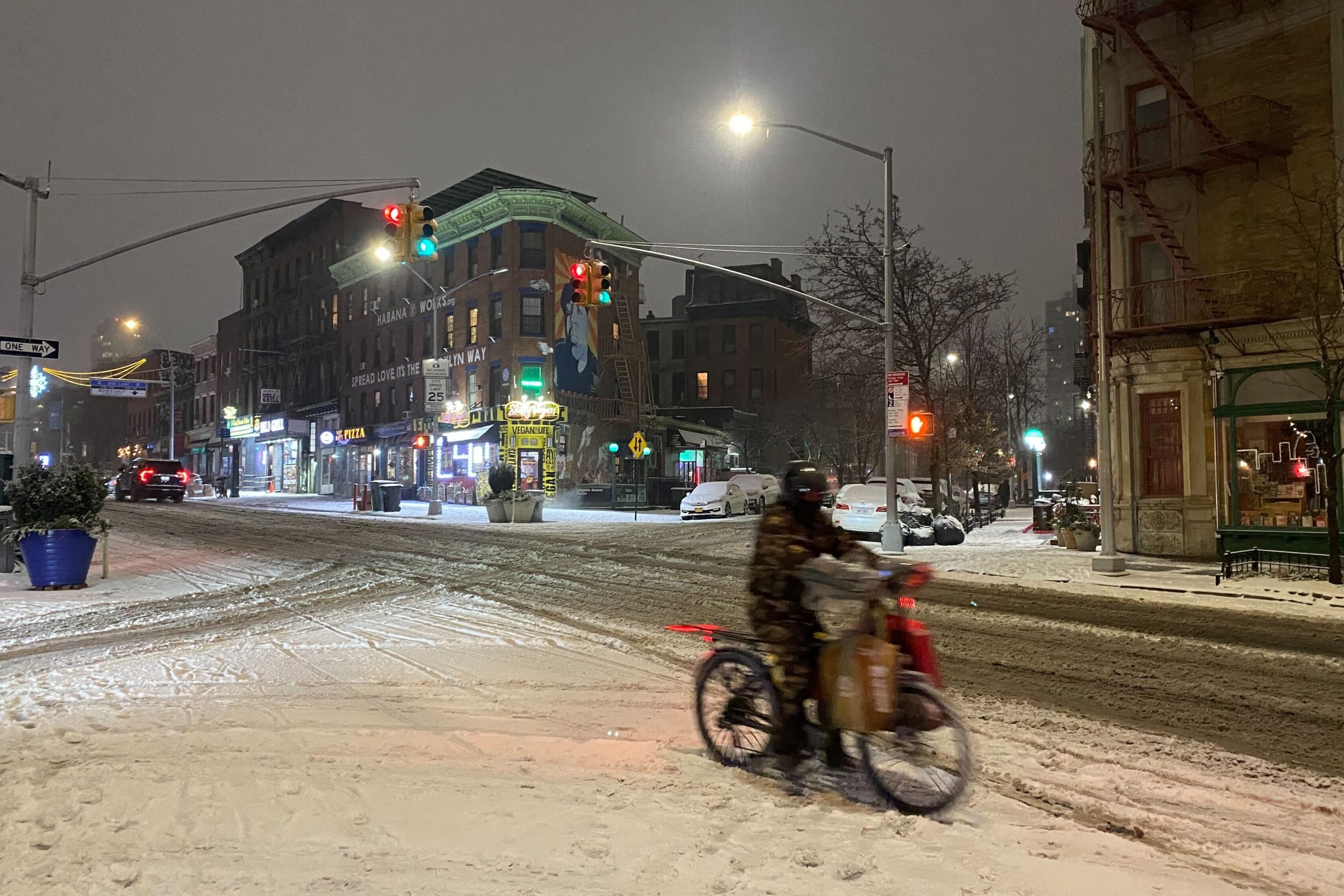 The BQE trench divides a neighborhood in two, spewing noise and air pollution. Photo: NYCEDC [PDF]
The BQE trench divides a neighborhood in two, spewing noise and air pollution. Photo: NYCEDC [PDF]Between 1950 and 1964, Robert Moses gouged a path across two boroughs to build the Brooklyn-Queens Expressway. In Brooklyn Heights, Cobble Hill and Carroll Gardens, the BQE slices through the urban fabric in the form of a below-grade trench, which has given many residents of those neighborhoods hope of covering that section of highway. As more people have moved to the west side of the ditch, the pressure to do something has mounted, but the BQE trench won't get capped any time soon.
 Before the BQE trench was built, the neighborhood had a fully connected street grid. Image: NYCEDC
Before the BQE trench was built, the neighborhood had a fully connected street grid. Image: NYCEDC The damage inflicted by the highway on residents' ears and lungs, however, could still be lessened, and some of the lost street connections can be restored. Right now, locals put up with traffic noise as high as 76 decibels --
at 80, you're subject to long-term hearing loss -- and dangerously elevated
levels of asthma-causing particulate pollution. Their neighborhood is effectively split in two. A study sponsored by Congresswoman Nydia Velazquez, who secured
$300,000 in federal funds, offers a few partial solutions to "fix the ditch."
The project team developing the study held its first community planning session last week, and the Brooklyn Eagle reports that improved bike-ped connections across the highway, noise-reducing walls, and environmental remediation measures are the favored changes. (This is a separate project from the reconstruction of the BQE in downtown Brooklyn, which could have major implications for the local and regional transportation system.)
The NYC Economic Development Corporation is leading the study, in partnership with NYCDOT and a host of consulting firms. The goal for now is to produce a plan that can be shopped around for additional funding. After two more community meetings, the lead planners will put out a
conceptual design and engineering report in July. In the fall, they'll issue three alternative plans for the trench. The money isn't in place yet for the redesign itself.
Neither is funding available for capping the trench, which could create new real estate for public space or private development. Seattle famously decked over part of I-5 to create Freeway Park, and Los Angeles is considering doing something similar where the 101 Freeway divides downtown. Though the Eagle reported that many residents near the BQE trench still hold out hope for such a bold scenario, planners don't expect to have access to the kind of money needed for more than incremental changes.
Instead, the EDC report [PDF] calls for traffic calming and wider sidewalks along the access roads on each side of the trench, where excess street space leads to speeding cars. It also proposes bridges over the trench that are safer and more aesthetically pleasing, and structures along the highway to absorb noise and pollution. Here are a few examples of what's on the table.
 Potential models for calming traffic along either side of the BQE trench. Photos: NYCEDC
Potential models for calming traffic along either side of the BQE trench. Photos: NYCEDC Pedestrian bridges from around the world could serve as templates for new walkways and bike connections over the trench. Photos: NYCEDC
Pedestrian bridges from around the world could serve as templates for new walkways and bike connections over the trench. Photos: NYCEDC Green walls would block noise, absorb some pollution, and make the highway look less awful. Photos: NYCEDC
Green walls would block noise, absorb some pollution, and make the highway look less awful. Photos: NYCEDC




